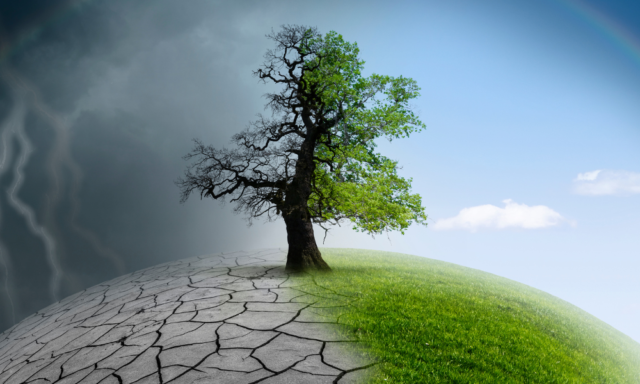We know that many museums view themselves as agents of change and advocates for a sustainable future. But climate messaging (and most public discourse) traditionally focuses on individual actions — recycling, driving less, cutting back on meat, things like that.
Somewhat surprisingly, advocating for individual solutions at museums can essentially backfire:
Possibly even more problematic than losing sight of the systemic nature of the problem, individual lifestyle changes have been found to be met with particular resistance, even from those who take climate change seriously. [Research in 2020] found that recommendations for behavioral changes decreased individuals’ willingness to take personal actions to reduce greenhouse gases, decreased willingness to support pro-climate candidates, reduced belief in the accelerated speed of climate change, and decreased trust in climate scientists; importantly, while the effect was more pronounced among conservatives, these problematic effects were the overall result in all respondents. (Source)
Sounds like we’re treading on delicate psychological ground. Fortunately, recent research suggests approaches that may have more impact. Let’s break down the findings.
Shifting the focus from individual action to collective impact
“Finally, some hope. Communicating systemic aspects of climate-change mitigation,” focuses on a question that lots of museums grapple with: What kind of climate message is most effective? While mindfulness at a micro level is undeniably important, the linked study suggests that museum education focusing on systemic change — particularly around transitioning to renewable energy — may be more powerful.
In preparation for new messaging at the Natural History Museum of Denmark, researchers found that when people were presented with information about systemic solutions, like renewable energy or policy shifts, they felt notably higher levels of hope and a stronger urge to take action — as opposed to paralysis and defeatism. In fact, the “systemic messages” sparked a sense of collective optimism and belief in the impact of their own actions.
Participants who read about systemic change (rather than individual efforts or neutral scientific information) felt more hopeful and were more likely to act on climate-related recommendations.
So, what does this mean for your work? By including discussions of big-picture solutions, you can encourage visitors to see themselves as participants in a broader shift. The tricky part, admittedly and unfortunately, is that museums may be reluctant to advocate anything with direct or even indirect political connotations, which systemic solutions almost always carry. It feels pricklier than ever considering the strong political divides in the U.S. right now.
But it’s worth pondering how to shift from solely urging small lifestyle adjustments to highlighting actions that push for broader change. Flex those diplomacy muscles. Could your exhibits, educational programs, or even casual interactions encourage this shift? Ask yourself: Are we inspiring hope and collective action? If not, it might be time for a new approach. I recommend checking out the linked article/study above for a readable analysis, recommendations based on the results, and an interesting take on the limitations of the study.
Building local climate action through museum partnerships
“Opportunities for science centers and museums to cultivate a culture of climate action,” dives into the role of museums as hubs for community-based climate action.
It points to museums and science centers across the U.S. that design and facilitate opportunities for collective climate action. One example: A number of institutions, including the Science Museum of Virginia and the Natural History Museum of Utah, have partnered with their communities to document urban heat islands. Collaborations like this generate data that can be used to inform local policies and help residents and policymakers better understand and address climate-related issues in their own neighborhoods.
The paper also shares the impact of engaging youth audiences in climate action. At places like The Wild Center in New York and Quest Science Center in California, Youth Climate Summits have provided high school students with tools and support to create their own climate projects. These summits aren’t merely educational — they help build the confidence and community that young people will need to become climate advocates long after the summit ends.
For museums, this presents a significant opportunity: As trusted local institutions, you’re uniquely positioned to convene groups, foster local research, and drive collective action. With programs that connect policymakers, scientists, and citizens, you can build networks of climate advocates in your community. You can expand your museum’s impact far beyond your walls.
What’s next?
Ultimately, all this data can be seen as a call to consider the evolving role of museums in climate action. It points to a growing role for museums, beyond educators to actual facilitators striving to create a culture of action. As expected, there’s a need for additional research:
Though these studies demonstrate *that* museums and science centers can catalyze action, the field would benefit from more research on the conditions under which they do so most effectively. (Source)
Again, what kind of climate messaging is most effective? What psychological factors actually drive people to act on climate change? And what types of museum programs are most likely to inspire these actions?
In response to these questions, the Association of Science and Technology Centers recently launched an initiative called Seeding Action. It’s a program designed to support museums by fostering collaboration, sharing resources, and offering adaptable climate communication guides. Seeding Action aims to equip museums with the knowledge and tools to drive impactful, evidence-based programming that encourages climate action in every community. Once more, I’d recommend browsing the links — both Seeding Action and the research article discussed above — for additional intent and background on this promising new program.





